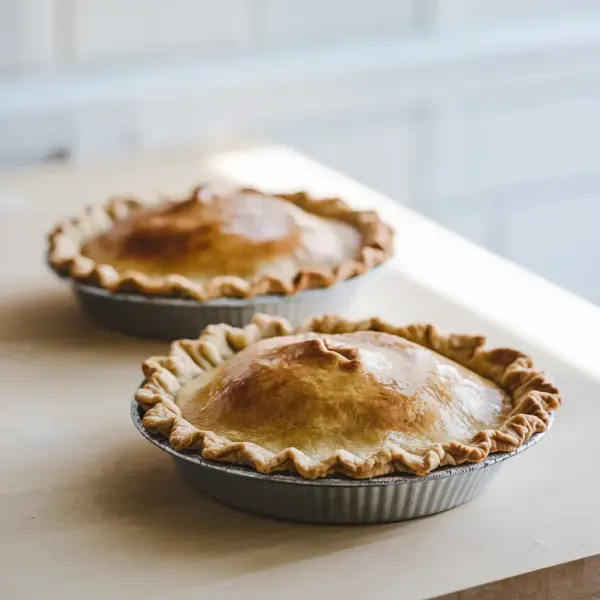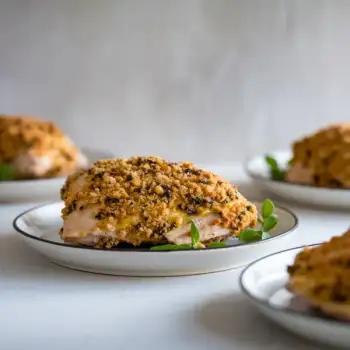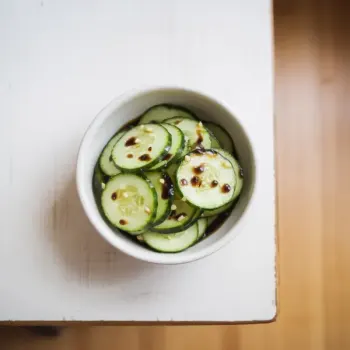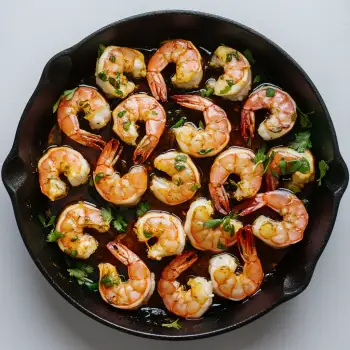
 210 minutes
210 minutesA beautifully flaky, all-butter pie crust, perfect for your favorite pie fillings.


Unsalted Butter, chilled
tablespoons
tablespoons
teaspoons
cups
1. Grate and Freeze Butter
Start by grating 2 tablespoons of the chilled butter using a box grater and place the grated butter in the freezer to keep it cold. Meanwhile, cut the remaining 8 tablespoons of butter into 1/2-inch cubes. Keeping the butter cold is crucial for ensuring a flaky crust.
2. Combine Dry Ingredients and Butter
In a food processor, pulse together 3/4 cup of the flour, the sugar, and salt for about two pulses to combine the dry ingredients evenly. Add the cubed butter to the processor and process the mixture for about 30 seconds until it forms a smooth, homogeneous paste. This step ensures even distribution of butter, which is key for the flakiness of the crust.
3. Form Butter-Flour Paste
Break the butter-flour paste into 2-inch chunks and redistribute them around the processor blade. Add the remaining 1/2 cup of flour to the processor and pulse 4-5 times until the butter pieces are no larger than 1 inch. This creates small butter pieces that will help achieve a flaky texture.
4. Combine Mixture with Grated Butter
Transfer the mixture to a medium bowl, add the grated butter from the freezer, and toss to coat the butter with the flour mixture. Sprinkle 2 tablespoons of ice water over the mixture and toss with a rubber spatula. Repeat with the remaining 2 tablespoons of ice water until the dough begins to come together.
5. Form and Chill Dough
Using a rubber spatula, press the dough until it sticks together. Transfer the dough to a piece of plastic wrap and form it into a 5-inch disk. Wrap the disk tightly and refrigerate for at least 2 hours, or up to 2 days. Before rolling, let the dough soften at room temperature for about 10 minutes.
6. Roll Out Dough
On a well-floured counter, roll the dough into a 12-inch circle. Carefully roll the dough around the rolling pin and unroll it onto a 9-inch pie plate. Trim the edges so that there is about a 1/2-inch overhang beyond the lip of the plate, then tuck the overhang under itself and crimp the edges. Refrigerate the pie shell for 30 minutes.
7. Blind Bake Pie Shell
While the dough chills, preheat your oven to 350 degrees Fahrenheit with a rack in the middle position. To blind bake, line the pie shell with aluminum foil and fill it with pie weights. Bake for 25-30 minutes, until the edges are set and beginning to turn golden.
8. Finish Baking
Remove the foil and weights, then rotate the pie plate and bake for an additional 10-15 minutes until the crust is golden brown and crisp. If the crust begins to puff, pierce it gently with a fork. Let the crust cool on a wire rack for about 30 minutes before filling.
Incorporate herbs or swap some water for an egg yolk for a savory twist in quiches or pot pies.
Add sugar to the crust for sweetened pie variants like fruit or custard-based pies.
Add a small amount of vodka or a splash of apple cider vinegar or lemon juice for pliability and tang.
Use the pie crust recipe for rustic galettes with sweet or savory fillings.
Add grated cheese to the dough for a cheese-flavored crust, ideal for savory pies.
Opt for high-quality, European-style butter with a higher fat content for a rich taste and flaky layers.
Ensure butter is very cold and consider chilling your flour to prevent the butter from melting before baking.
Handle the dough as little as possible to avoid gluten development and keep the crust tender.
Add ice water a tablespoon at a time, until the dough holds together without being wet or sticky.
Rest the dough in the refrigerator for at least an hour or overnight to relax gluten and firm up the butter.




Comments (0)